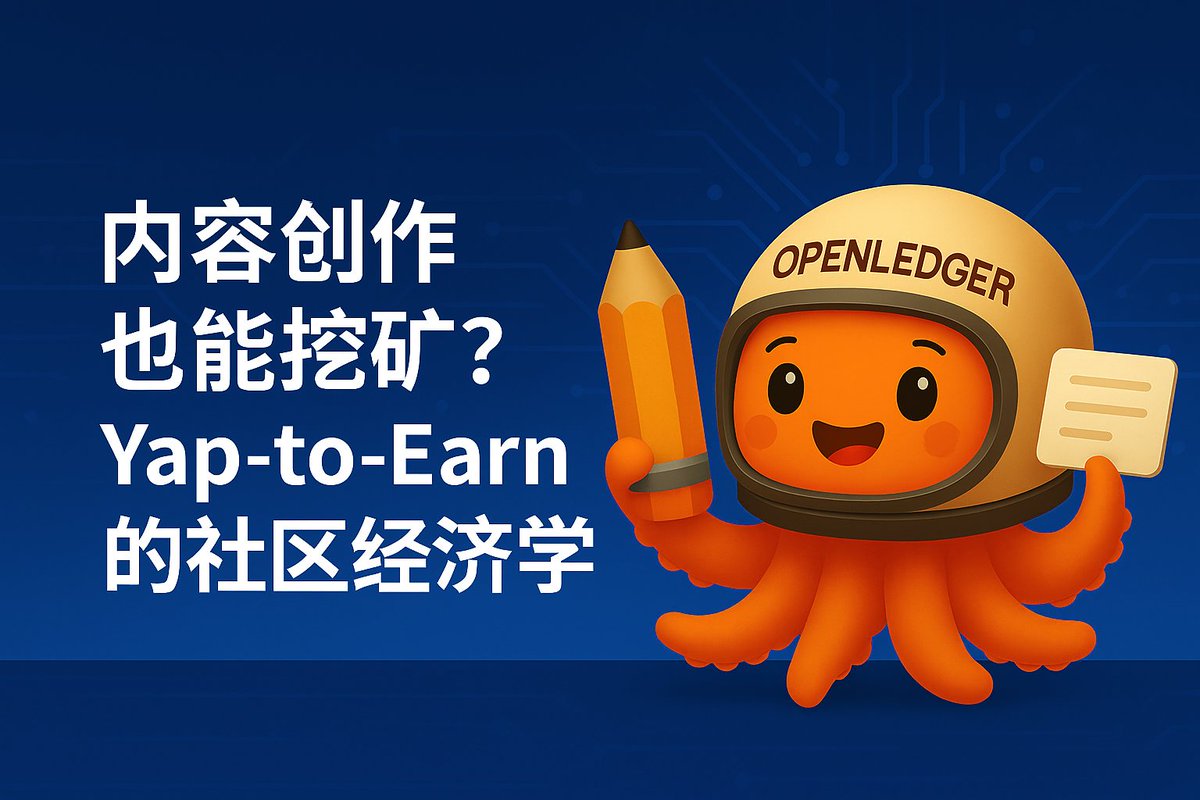Can content creation also mine? The community economics of Yap-to-Earn
Among the many "X-to-Earn" attempts in Web3, most have fallen into a vicious cycle of "short-term incentives - data churn - user attrition." The Yap-to-Earn module launched by OpenLedger aims to establish a stronger positive relationship between incentives and expression, promoting on-chain behavior to transform into content, cognition, and long-term community contributions. This is not only a new type of content incentive model but also an experiment in community economics.
1. Yap is not noise; it is structured expression
The core of Yap-to-Earn lies in guiding users to generate content expressions around on-chain behavior. Users can leave messages on-chain, comment on others' interactions, like models, write brief reviews, etc. The system will structure these behaviors into "contribution data" and conduct attribution, recording, and point rewards. Each Yap is not just information but a "social contribution that can be recognized and incentivized."
Unlike traditional Web2 content platforms, OpenLedger's Yap mechanism is based on on-chain calling trajectories, ensuring that speakers and interactors have a genuine participatory relationship. At the same time, the system conducts a comprehensive assessment based on the degree of matching with likes, citations, and on-chain calling results. This makes content no longer just "lively" but possesses a dimension of "participation value."
2. Incentive mechanism design: rewarding "high participation" rather than "high volume"
In Yap-to-Earn, it is not the case that "the more you post, the more points you earn." The system has designed anti-abuse mechanisms, such as: daily contribution limits, devaluation of repeated content, detection of machine-generated content, etc.; it also sets up positive incentive mechanisms, for example: being liked by high-reputation users will earn higher points, and Yap content being cited or adopted by models will receive secondary incentives.
This design makes Yap-to-Earn more like a "social mining mechanism"—encouraging genuine expression, viewpoint collisions, and cross-model feedback to facilitate a positive cycle of AI model training, user retention, and content network growth.
3. A new stage for Web3 narratives: not a content platform, but a reputation generation system
From a deeper perspective, Yap-to-Earn is not a "content distribution platform" but an important component of OpenLedger's reputation system. Each Yap records the author's behavioral path, content depth, and community feedback, becoming a key factor in their reputation points. This mechanism allows content creators to no longer depend on centralized platform rules but to obtain transferable reputation assets through on-chain performance.
Therefore, OpenLedger's Yap-to-Earn does not simply move "Web2 content onto the chain" but attempts to build a community model "driven by expression to generate participation, and by participation to generate reputation." Here, content creators are a special type of on-chain collaborator, and Yap is their first step in participating in AI city governance.
#OpenLedger #COOKIE #Comprehensive breakdown of OpenLedger series
@OpenledgerHQ @cookiedotfun
Show original
19.66K
70
The content on this page is provided by third parties. Unless otherwise stated, OKX TR is not the author of the cited article(s) and does not claim any copyright in the materials. The content is provided for informational purposes only and does not represent the views of OKX TR. It is not intended to be an endorsement of any kind and should not be considered investment advice or a solicitation to buy or sell digital assets. To the extent generative AI is utilized to provide summaries or other information, such AI generated content may be inaccurate or inconsistent. Please read the linked article for more details and information. OKX TR is not responsible for content hosted on third party sites. Digital asset holdings, including stablecoins and NFTs, involve a high degree of risk and can fluctuate greatly. You should carefully consider whether trading or holding digital assets is suitable for you in light of your financial condition.

